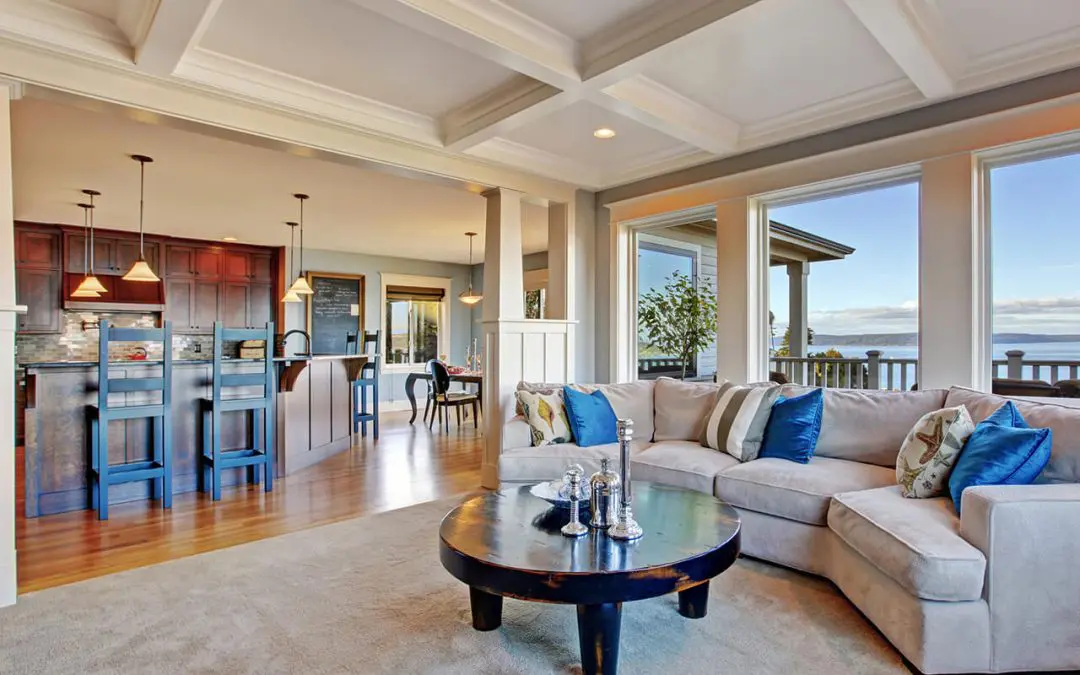Your home should be more than just a place to live; it should be a sanctuary, a reflection of your personality, and a haven of peace and relaxation. Achieving this is about understanding the core elements that make a space feel inviting and functional. Focusing on key design principles and personal touches allows you to transform any room into a truly comfortable living space that you and your family will cherish.
The Foundation of Comfort: Smart Layout and Flow
Before you even think about furniture or paint colors, consider the layout and flow of your rooms. A well-designed layout is the backbone of any comfortable living space, guaranteeing ease of movement and logical interaction. Start by decluttering. Excessive furniture or decor will make a room feel cramped and chaotic, hindering physical movement and visual peace. Once unnecessary items are removed, arrange your furniture to create natural pathways. Avoid blocking doorways or high-traffic areas. Consider creating distinct zones for larger rooms to give purpose to different parts without cluttering them. In smaller spaces, multifunctional furniture (like an ottoman with storage or a sofa bed) will maximize utility without sacrificing an open feel. A well-thought-out layout is essential for an effortlessly comfortable living environment.
Lighting Your Way to Comfortable Living
Lighting plays a pivotal yet often underestimated role in creating a space’s mood and functionality. A single overhead light may feel stark and unwelcoming. A layered lighting scheme, however, cultivates warmth and versatility. Aim for a combination of three types of lighting: ambient (general illumination from ceiling fixtures), task (focused light for activities like reading), and accent (decorative light used to highlight features). Use dimmers on your ambient and accent lighting to allow you to adjust the mood from bright and energizing to soft and relaxing. Opt for warm-toned LED bulbs for living areas and bedrooms, as they emit a cozy, inviting glow that instantly makes a space feel more comfortable.
Texture and Softness: The Tactile Elements of Comfortable Living
Incorporating a variety of textures will dramatically enhance the coziness and appeal of any room, making it a truly comfortable living space. Think about how different materials feel to the touch. Layering soft elements like plush throw blankets, decorative pillows in various fabrics, and area rugs will transform a sterile room into an inviting haven. Hard surfaces like wooden floors or stone countertops benefit immensely from the addition of soft textiles, which absorb sound and add warmth. Thick, lined curtains provide privacy and block light while adding a significant layer of textile softness that makes a room feel more complete and acoustically pleasant. Even small details, like a woven basket for storage or a textured ceramic vase, contribute to a rich tactile experience that defines comfortable living.
Personal Touches: Making It Uniquely Yours
The final, and perhaps most important, ingredient in creating comfortable living spaces is personalization. Your home should tell your story and reflect your unique tastes and memories. Integrate items that hold personal significance: family photos, cherished artwork, travel souvenirs, or handmade crafts. These items instantly add warmth and character that no generic decor could replicate. Choose colors that resonate with you, rather than just following trends. Consider adding elements of nature, which have been proven to reduce stress and enhance well-being. Live plants add freshness and a touch of color while also helping improve indoor air quality. Even natural materials like wood, stone, and woven fibers contribute to a calming, organic feel. By infusing your spaces with personal meaning and natural elements, you create an environment that truly supports your well-being and defines comfortable living.
Frequently Asked Questions (FAQs)
How do I make a small room feel more comfortable and spacious?
To make a small room feel more like a comfortable living space, use light paint colors, incorporate mirrors to reflect light and expand the perception of space, choose furniture with visible legs, and focus on vertical storage to keep floor space clear.
What’s the ideal color palette for comfortable living?
While personal preference is key, soft neutrals (grays, beiges, whites), calming blues, and warm greens are often associated with peace and relaxation. The most important thing is to choose colors that make you feel comfortable and happy.
Can smart home technology contribute to comfortable living?
Absolutely! Smart thermostats, automated lighting, and voice-controlled entertainment systems all enhance convenience and create a more responsive, effortless environment, allowing you to easily adjust settings to achieve your ideal level of comfort.
How often should I change my decor to maintain comfort?
There’s no set rule. Comfort is subjective. You can refresh your space seasonally with new throw pillows, blankets, or plants, or make larger changes when your lifestyle or tastes evolve. The goal is to keep the space feeling fresh and aligned with your current definition of comfortable living.
Buyer’s Edge offers home inspections to customers in Western North Carolina. Contact us to request our services.

